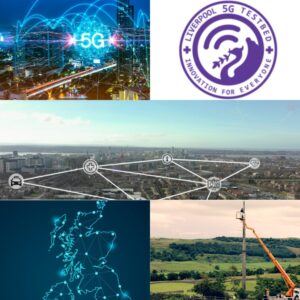In today’s competitive market, ensuring your networks radio coverage and capacity meets or exceeds that of competitor networks ranks highly and is a driver to success.
Radio network coverage is termed as the geographical area covered by a network or service provider. Within that area, the mobile phone or radio device should be able to complete a call across the network for a given period and without undue interference. Rivalry to achieve the best coverage is often fierce among mobile network operators. However, network blackspots or mobile not-spots still affect rural areas in the UK and beyond, with many rural broadband initiatives suffering from, among other things, the inability to build a viable business case for network deployment.
 The issue of tackling mobile not-spots has been the focus of national governments in recent years, with funding made available through programs such as Rural Broadband rollout and 4G Infills.
The issue of tackling mobile not-spots has been the focus of national governments in recent years, with funding made available through programs such as Rural Broadband rollout and 4G Infills.
In Scotland, the 4G Infill program continues to deliver 4G/LTE infrastructure and services. Initially targeted at 50-60 not-spots across the country, further sites were identified. The infills aim to provide coverage uplift to population, transport, key tourism areas and geographic areas. Identifying potential new sites and modelling their impact on existing coverage falls to the responsibility of radio network planners. Using HTZ Communications, engineering teams carry out prospective planning to identify the best locations for new sites. Once sites are identified and the initial planning completed, further analysis is undertaken to identify any interference issues resulting from those new sites. Further statistical analysis is carried out to ensure that the network meets the spectrum license regulations in terms of coverage and that traffic throughput is optimized.
Similarly, government initiatives like the 5G testbeds and trials programme, looks at how to harness a competitive advantage through technology. While most mobile network operators provide a high-level of coverage to city centres, over time and as data-consumption grows, these networks won’t meet consumer demand. Currently, 5G equipment is hosted on existing phone masts, but we are seeing huge growth in smaller transmitters (small cells) being added to improve capacity at specific locations. Small cell rollouts for cities like Liverpool are becoming a reality after its participation as a 5G testbed. This trial aimed to improve network capacity to support health and social care initiatives and improve the lives of people’s welfare across the city. Improved network capacity is the increase in traffic a network can handle at any given time.
In this case, small cell transmitters were added at street-level and modelled using deterministic propagation models, like those featured in HTZ Communications, to manage MIMO antennas and beamforming. Modelling multipath and beamforming allows operators to increase capacity and support the growing demand from new data-heavy applications which rely on the network capacity and increased data rates. These projects require a high-resolution 3D dataset or map model to simulate coverage of the 5G network. Planning a data-centric network based on 5G and featuring massive MIMO antennas, can only be achieved when using an RF modelling tool.
Radio coverage planning and prospective planning have been a central focus for ATDI since its inception. The resource-intensive process of producing radio coverage plots is automated within ATDI’s flagship planning tool, HTZ Communications, allowing repetitive tasks to be carried out at the click of a button.
HTZ Communications is technology-neutral and can be used to produce a variety of coverage studies including network coverage analysis, composite coverage, overlapping and best server coverage. The tool can analyse both outdoor and indoor coverage from signal penetration loss and features a prospective planning function to identify the best locations for adding new sites for infill coverage.
For more information about HTZ Communications, contact us today. To learn more about how to identify mobile not-spots, check out the project we completed for North Yorkshire County Council.
For more UK updates visit:

